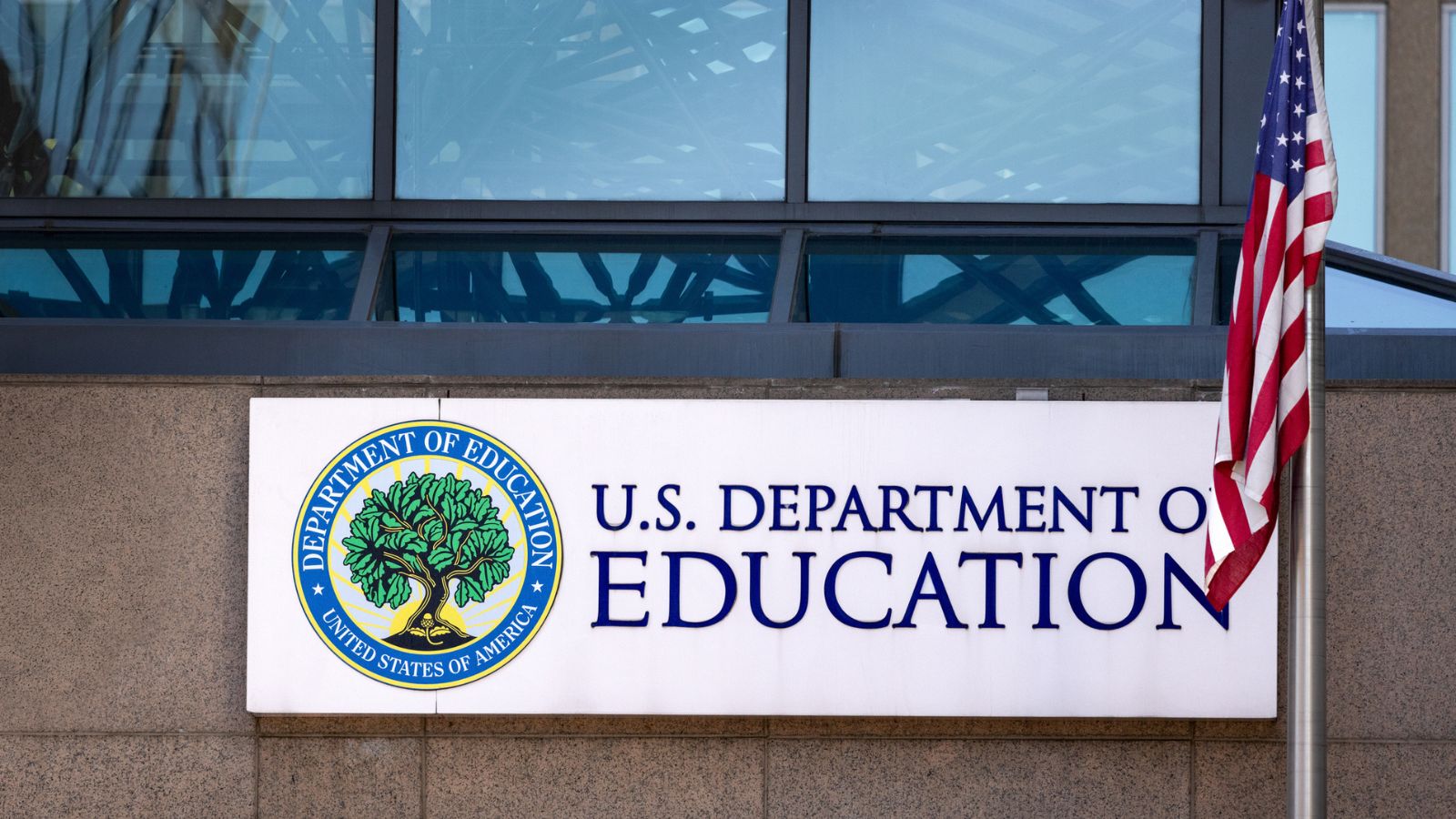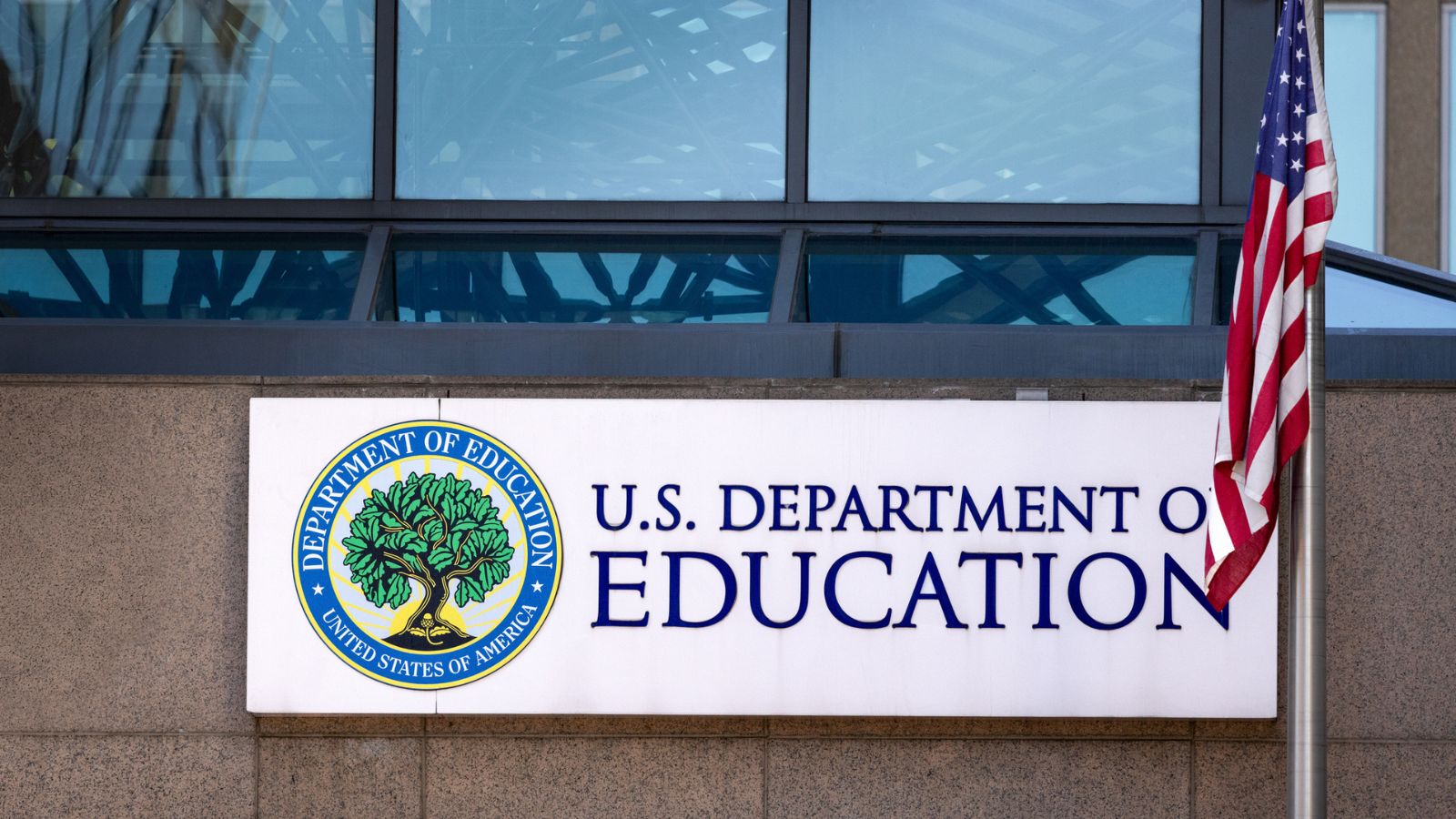
President Trump campaigned on the concept of dismantling the Division of Training (DOE). In February, he put out an government order to shrink the division. The implementation of the preliminary government order had been stalled within the courts. It was blocked by a federal choose in Massachusetts after which taken up by the Supreme Court docket. However on Monday July 14, the Supreme Court docket determined that the manager department can proceed with its plan to scale back the dimensions of the division by 50%.
So, what occurs now? How will this resolution influence schooling? And when and the way will lecturers really feel the results? We spoke with two schooling coverage consultants about what this resolution means for lecturers and the upcoming college 12 months.
First, what does the DOE do?
The primary work of the DOE is to set a imaginative and prescient for schooling and implement that by means of funding its priorities. It administers about 10% of faculty funding, administers the Workplace for Civil Rights, implements federal assessments (the Nation’s Report Card, or the NAEP), gives analysis grants, and oversees the scholar mortgage applications.
Congress defines what the DOE does, and the Supreme Court docket ruling doesn’t change that. What the court docket ruling does is present the manager department with extra energy to determine who’s doing the work of the DOE and the way massive the division is. So, the 1,300 individuals who had been positioned on administrative go away earlier this 12 months can now be fired, making a long-term discount in workers. It will have an effect on how the DOE administers the Workplace for Civil Rights, college funding, testing, and reporting, all of which can be felt this college 12 months.
What occurs when there are fewer individuals working on the DOE?
One knowledgeable we spoke with is Michael Hansen, senior fellow on the Brown Heart on Training Coverage on the Brookings Establishment. Hansen defined to us that whereas the federal authorities doesn’t run particular person faculties or set native curriculum, lecturers should still really feel the results of this resolution—although not all the time straight. As an alternative, the influence is more likely to be felt in additional refined, oblique methods.
A lowered Workplace for Civil Rights
Aaron Pallas, the Arthur I. Gates Professor of Sociology and Training at Columbia College’s Lecturers Faculty, informed us that essentially the most alarming change is the closing of native workplaces of the Workplace for Civil Rights. That workplace performs a important function in defending college students from discrimination, particularly college students with disabilities, English language learners, and others who could also be susceptible. Up to now, in line with Alice O’Brien, normal counsel for the Nationwide Training Affiliation (NEA), seven out of the 12 regional area workplaces of the Workplace of Civil Rights have been closed.
With out these native workplaces, complaints could possibly be dismissed or delayed, leaving college students in environments that aren’t supportive or equitable. This will likely have an effect on college students with disabilities, says O’Brien, as complaints of incapacity discrimination make up greater than half of the complaints that the workplace receives. It’s additionally a broader sign from the White Home, provides Michael Hansen, that federal oversight of such complaints might now not be a district-level concern.
Instability in class funding
The Supreme Court docket resolution may influence how federal funds get administered on the native stage. About 10% of native college funding comes from the federal authorities, and that cash needs to be administered, says Pallas. With out expert individuals to manage that cash, there’s a threat the cash might not make it to the best place on the proper time. The influence on districts and lecturers will depend upon the funds and what they’re supposed to do, however with out civil servants to manage funding, there’s the potential of getting chaos within the system. “When there’s a threat that the cash isn’t going to point out up,” says Pallas, “techniques will be disrupted, and that may be dangerous for college kids.”
Narrowed federal testing
The Nationwide Evaluation of Instructional Progress, the federal evaluation of pupil progress that’s administered each 4 years, is congressionally mandated, so it’s going to proceed. Nonetheless, it has been lowered. The division continues to be producing NAEP, however assessments in topics aside from math and studying have been lower. This implies no extra knowledge on writing, civics, science, and different subjects. As lecturers, we all know that what’s examined is prioritized, so narrowing the NAEP may imply narrowing schooling general.
Much less data and reporting
The DOE usually produces stories, just like the Nationwide Studying Panel report, which has formed quite a lot of studying instruction and analysis. With fewer individuals within the DOE, fewer of those stories shall be produced. Already, notes Hansen, the primary Trump administration annual Digest of Training Statistics had about one-third of the content material in comparison with years previous. This doesn’t have a big impact on lecturers’ every day lives, however it does restrict the data that we find out about what’s taking place in faculties.
The administration has additionally successfully eradicated the Institute for Training Science, O’Brien informed We Are Lecturers. Which means that, in 2025, for the primary time within the Division’s historical past, Congress was not supplied with an annual report on the state of schooling. “They merely now not have the workers or analysis assist to gather, analyze, and report on the situation of schooling as required,” says O’Brien.
A shift within the bully pulpit
The individuals who work within the DOE “aren’t political hacks,” says Hansen. “They aren’t individuals who have robust political ideologies. They’re attempting to do what Congress has mandated in allocating funds for schooling.” The truth that they’re politically impartial of their work is essential. When civil servants are fired and the people who find themselves left are extra politically motivated, it could influence how the DOE features. For instance, the Trump administration has already slowed the work of the Workplace for Civil Rights and shifted investigations to focus by itself priorities, similar to ending participation of transgender athletes in girls’s sports activities, as an alternative of addressing racial discrimination.
What lecturers can do
On one hand, keep knowledgeable. The court docket fights aren’t over. Hansen anticipates that extra court docket circumstances will proceed within the decrease courts. All of the circumstances which might be pending will proceed, says O’Brien, together with two by the NAACP and NEA that problem the Trump administration’s efforts to dismantle the DOE, at present pending within the District Court docket of Maryland. Pallas anticipates a college 12 months that feels extra chaotic, which is regarding as a result of “faculties, districts, and lecturers profit from stability.”
Lecturers may also be taught concerning the helps their district receives by means of the DOE and what’s going to occur to their district if these helps are eliminated. Understanding how these modifications influence your group prepares you to talk out and educate others. “The time is correct now to push again in opposition to this full-scale assault on the Division of Training,” says O’Brien, “and the function it performs supporting college students and schooling throughout the nation.”



